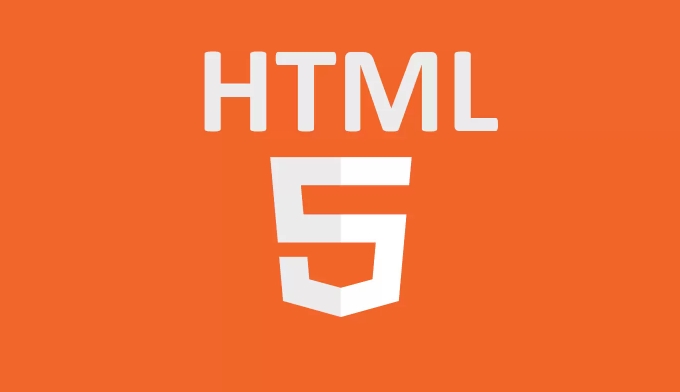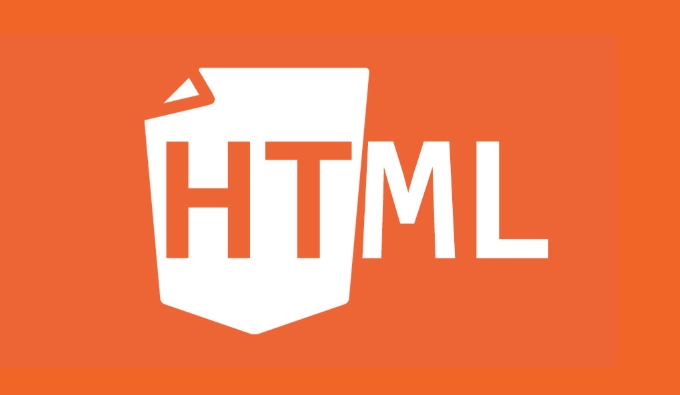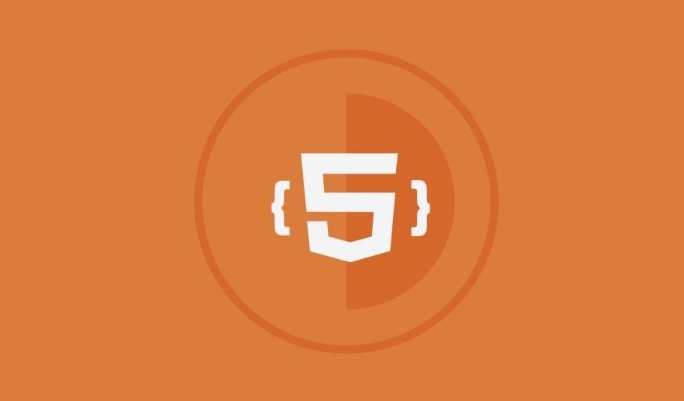What is the rel='noopener noreferrer' attribute in HTML?
Jul 06, 2025 am 12:58 AMUsing rel="noopener noreferrer" in HTML links is essential for security, privacy, and analytics. When opening external links with target="_blank", it prevents reverse tabnabbing attacks by blocking the new tab from accessing the original tab via JavaScript (noopener), and stops the browser from sending the referrer URL (noreferrer), which protects user privacy and ensures accurate traffic tracking. These attributes should be used on all external links that open in a new tab, especially third-party, user-generated, or affiliate links, but are generally unnecessary for internal site links unless extra caution is needed. While noreferrer often implies noopener in modern browsers, including both explicitly ensures broader compatibility and stronger protection across all environments.

When you see rel="noopener noreferrer" in an HTML link, it's there to control how the browser behaves when opening a new tab or window using the <a></a> tag with a target="_blank" attribute. It’s not just random code—it serves specific security and tracking purposes.

Why You Should Use rel="noopener noreferrer"
If your website opens external links in a new tab (using target="_blank"), not adding this rel attribute can leave your site open to certain types of attacks—especially reverse tabnabbing. Also, from an analytics perspective, not including noreferrer means you might be sending referrer information that could interfere with accurate traffic tracking.

Here are some practical reasons why you’d want to use it:
-
Security: Prevents the new tab from accessing your original tab via JavaScript (
window.opener). - Privacy: Stops browsers from sending the referrer URL when navigating to the new page.
- SEO & Analytics: Helps avoid skewing referral data by not passing your site as the source.
When and Where to Use It
You should use rel="noopener noreferrer" specifically on any external link that opens in a new tab. That includes outbound links to other websites, especially if you don’t control or trust the destination.

For example:
<a href="https://example.com" target="_blank" rel="noopener noreferrer">Visit Example</a>
This is common practice for:
- Links to third-party sites in blog posts or comments
- User-generated content linking externally
- Affiliate links (though sometimes those have different handling)
You generally don’t need it for internal links within your own site unless they open in a new tab and you're extra cautious about referrer behavior.
Breaking Down noopener vs noreferrer
While they’re often used together, each part does something different:
-
noopener: This stops the new page from accessing the opener window via JavaScript. Without this, a malicious site could technically run code against your original page. -
noreferrer: This blocks the browser from sending the HTTP Referer header when the user navigates to the new link. This affects analytics but also helps protect privacy.
A few things to note:
-
noreferreralso impliesnoopenerin most modern browsers, but it's still best to include both explicitly. - If you only use
noopener, referrer data will still be sent. - Some older browsers may treat them differently, so including both ensures better compatibility.
Final Thoughts
Adding rel="noopener noreferrer" is a small detail that makes a big difference. It's a standard best practice for external links that open in new tabs, and it takes just a second to include. Most CMS platforms and static site generators already do this automatically these days, but if you're writing raw HTML or working in a framework, it’s good to double-check.
That’s basically it. Small tag, important job.
The above is the detailed content of What is the rel='noopener noreferrer' attribute in HTML?. For more information, please follow other related articles on the PHP Chinese website!

Hot AI Tools

Undress AI Tool
Undress images for free

Undresser.AI Undress
AI-powered app for creating realistic nude photos

AI Clothes Remover
Online AI tool for removing clothes from photos.

Clothoff.io
AI clothes remover

Video Face Swap
Swap faces in any video effortlessly with our completely free AI face swap tool!

Hot Article

Hot Tools

Notepad++7.3.1
Easy-to-use and free code editor

SublimeText3 Chinese version
Chinese version, very easy to use

Zend Studio 13.0.1
Powerful PHP integrated development environment

Dreamweaver CS6
Visual web development tools

SublimeText3 Mac version
God-level code editing software (SublimeText3)

Hot Topics
 Explain the purpose of the role attribute in ARIA.
Jun 14, 2025 am 12:35 AM
Explain the purpose of the role attribute in ARIA.
Jun 14, 2025 am 12:35 AM
ARIA's role attribute is used to define the role of web elements and improve accessibility. 1. Role attribute helps assistive technology to understand the functions of elements, such as buttons, navigation, etc. 2. Use role attributes to assign specific roles to non-semantic HTML elements. 3. The role attribute should be consistent with the element behavior and be verified by the accessibility tool test.
 HTML and Design: Creating the Visual Layout of Websites
Jun 14, 2025 am 12:39 AM
HTML and Design: Creating the Visual Layout of Websites
Jun 14, 2025 am 12:39 AM
How to create a website layout? 1. Use HTML tags to define the content structure, such as, ,. 2. Control styles and positions through CSS, using box model, float or Flexbox layout. 3. Optimize performance, reduce HTTP requests, use cache and optimize images, and ensure responsive design.
 How can you ensure your HTML code is readable and maintainable?
Jun 10, 2025 am 12:06 AM
How can you ensure your HTML code is readable and maintainable?
Jun 10, 2025 am 12:06 AM
Improve the readability and maintainability of HTML code can be achieved through the following steps: 1. Use semantic tags, such as, etc. to make the code structure clear and improve SEO effect; 2. Keep the code formatted and use consistent indentation and spaces; 3. Add appropriate comments to explain the code intention; 4. Avoid excessive nesting and simplify the structure; 5. Use external style sheets and scripts to keep the HTML concise.
 How do I stay up-to-date with the latest HTML standards and best practices?
Jun 20, 2025 am 08:33 AM
How do I stay up-to-date with the latest HTML standards and best practices?
Jun 20, 2025 am 08:33 AM
The key to keep up with HTML standards and best practices is to do it intentionally rather than follow it blindly. First, follow the summary or update logs of official sources such as WHATWG and W3C, understand new tags (such as) and attributes, and use them as references to solve difficult problems; second, subscribe to trusted web development newsletters and blogs, spend 10-15 minutes a week to browse updates, focus on actual use cases rather than just collecting articles; second, use developer tools and linters such as HTMLHint to optimize the code structure through instant feedback; finally, interact with the developer community, share experiences and learn other people's practical skills, so as to continuously improve HTML skills.
 How do I use the element to represent the main content of a document?
Jun 19, 2025 pm 11:09 PM
How do I use the element to represent the main content of a document?
Jun 19, 2025 pm 11:09 PM
The reason for using tags is to improve the semantic structure and accessibility of web pages, make it easier for screen readers and search engines to understand page content, and allow users to quickly jump to core content. Here are the key points: 1. Each page should contain only one element; 2. It should not include content that is repeated across pages (such as sidebars or footers); 3. It can be used in conjunction with ARIA properties to enhance accessibility. Usually located after and before, it is used to wrap unique page content, such as articles, forms or product details, and should be avoided in, or in; to improve accessibility, aria-labeledby or aria-label can be used to clearly identify parts.
 How do I create a basic HTML document?
Jun 19, 2025 pm 11:01 PM
How do I create a basic HTML document?
Jun 19, 2025 pm 11:01 PM
To create a basic HTML document, you first need to understand its basic structure and write code in a standard format. 1. Use the declaration document type at the beginning; 2. Use the tag to wrap the entire content; 3. Include and two main parts in it, which are used to store metadata such as titles, style sheet links, etc., and include user-visible content such as titles, paragraphs, pictures and links; 4. Save the file in .html format and open the viewing effect in the browser; 5. Then you can gradually add more elements to enrich the page content. Follow these steps to quickly build a basic web page.
 What is an HTML tag?
Jun 13, 2025 am 12:36 AM
What is an HTML tag?
Jun 13, 2025 am 12:36 AM
HTMLtagsareessentialforstructuringwebpages.Theydefinecontentandlayoutusinganglebrackets,ofteninpairslikeand,withsomebeingself-closinglike.HTMLtagsarecrucialforcreatingstructured,accessible,andSEO-friendlywebpages.
 How do I create checkboxes in HTML using the element?
Jun 19, 2025 pm 11:41 PM
How do I create checkboxes in HTML using the element?
Jun 19, 2025 pm 11:41 PM
To create an HTML checkbox, use the type attribute to set the element of the checkbox. 1. The basic structure includes id, name and label tags to ensure that clicking text can switch options; 2. Multiple related check boxes should use the same name but different values, and wrap them with fieldset to improve accessibility; 3. Hide native controls when customizing styles and use CSS to design alternative elements while maintaining the complete functions; 4. Ensure availability, pair labels, support keyboard navigation, and avoid relying on only visual prompts. The above steps can help developers correctly implement checkbox components that have both functional and aesthetics.






